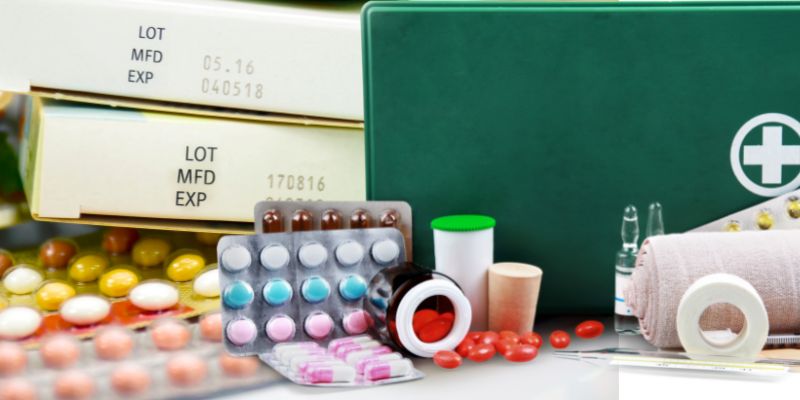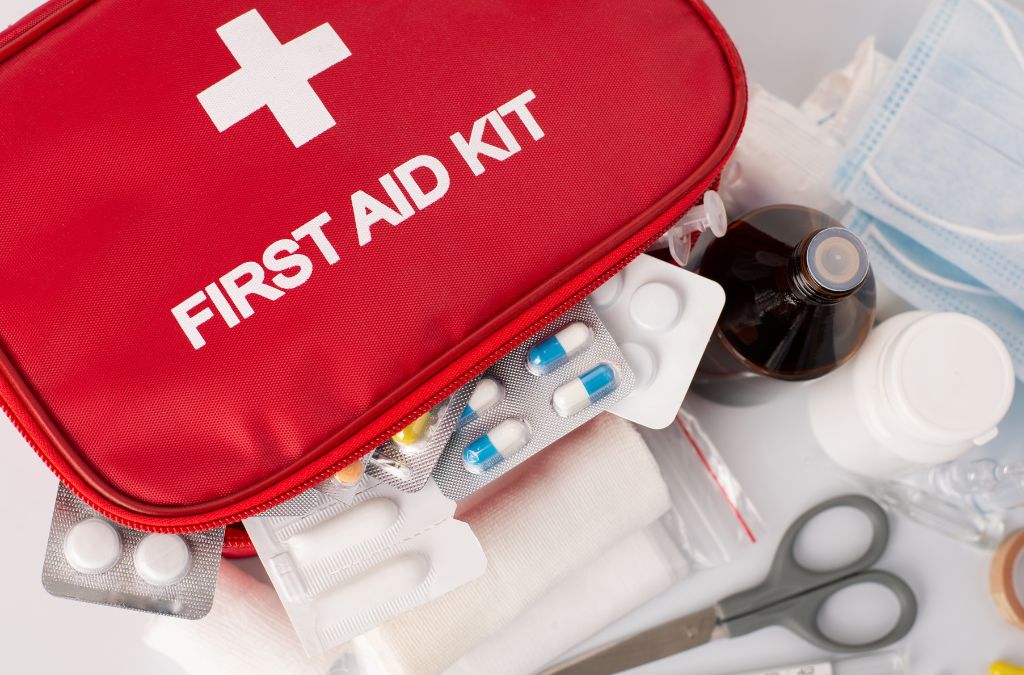It’s important to have a well-stocked first aid kit for home. This will ensure that your family has access to medical essentials in times of emergency.
Fortunately, putting together a first aid kit for your home need not be a daunting task. You can always start with a simple kit, then choose to add more later so that it suits the specific needs of your household.
That said, some families do prefer to begin with a blank slate and build a first aid kit from scratch. This means they can customize the kit according to their needs and preferences.
Whether you choose to start with a generic kit or build your own from scratch, here are a few tips to help. Create a fantastic first aid kit for home that will work for any situation.
1. Start With Basic Medical Essentials
Essential medical items for a home first aid kit include:
- sterile gauze pads of different sizes,
- adhesive tape,
- adhesive and elastic bandages,
- antiseptic wipes,
- tweezers and scissors,
- safety pins,
- a thermometer,
- a pair of latex-free gloves
- eyewash solution.
You should also include creams like hydrocortisone, calamine lotion, and antibiotic ointments for treating wounds and irritations.
Medications that address fevers, body pains, diarrhea, and constipation should also be included in a first aid kit for home.

2. Consider Specific Family Needs In A First Aid Kit For Home
Once you’ve got the basics covered, list the ages and medical needs of each family member. Use this information as a guide for customizing your first aid kit to include specific medical essentials.
Do you have older adults at home who take regular medicines? If so, it might be wise to keep a small stash of their maintenance medications in your first aid kit.
With infants or toddlers, it makes sense to keep liquid paracetamol, teething gel and a diaper rash cream in your kit. The same can be done if you have family members with chronic illnesses and distinct medical needs.
3. Keep Your Medical Essentials In One Place
Don’t have the components of a first aid kit scattered in different places around your home. Having all of your first aid paraphernalia in a designated bag or container will prove to be a practical choice. This is especially true during emergencies where emotions are running high and there may be panic.
When time is of the essence, having a designated first aid kit for home could be a life-saver! If there is an accident in your household or a need to rush someone to the hospital, you can simply grab the bag and immediately use it to help.
Also, you’ll have an easier time checking the medical essentials. Regularly check if the medications and tools that you use to administer first aid are complete, in good form and are not yet past their expiration date. This is quick and simple if they’re all stored in a single container.
4. Add A Manual To Your Home First Aid Kit
Keep in mind that not everyone knows how to apply first aid. In fact, what to do can be different in certain situations. This lack of knowledge can be a disadvantage in times of medical emergencies.
As such, make it a point to include an updated first aid manual in your kit. This will help you and anyone in your family make smart decisions on how to help others in times of need.
Make a point of replacing the manual every year or so to keep up-to-date.
5. Include A List Of Important Contact Details

Aside from a manual on updated first aid procedures, it’s also a must to include important phone numbers in your first aid kit.
This way, the person using the kit can immediately call an emergency responder when the situation calls for it.
Start with the contact details of your local family physician, hospital, fire station, and police station. Also include phone numbers for family members such as parents, grandparents or family living close by. If there is no family around, add numbers for close family friends who could help in an emergency.
Having relevant phone numbers handy could mean the difference between health and permanent injury, or worse!
6. List Expiry Dates Of Medical Essentials
Sometimes, it can be difficult to determine whether a medical product has expired or not. While certain medical essentials show clear signs of going bad (a foul smell, unusual consistency or a change in color) others may not.
Expiry date stickers or stamps on medical products can also become faded or smeared, becoming practically unreadable. So, how do you know if you should use the items in your first aid kit for home?
To keep track of each product’s expiry date, create a list of all the items in your kit along with their corresponding expiry dates.
Place this list in a waterproof resealable plastic bag before adding it to your first-aid kit. It will serve as a handy reference whenever you go through your kit to see if everything is still in usable condition.
If possible, you should try to review your kit every few months to ensure that you always have unexpired medications on hand.

Final Word
An good first aid kit for home should include a number of medical essentials. It must be accessible, be kept up-to-date and include a manual and relevant emergency and family phone numbers.
This will enable you to treat wounds and minor illnesses immediately. In fact, it should also help you seek the assistance you need for bigger emergencies and medical issues.
Just follow these simple steps in putting together a first aid kit for home, and you’ll be one step closer to ensuring that your family is ready in case an emergency arises.
In worst cases like accidents, it is also important that you know how to file for medical compensation.
Our super author here at Famous Parenting and an absolute wealth of knowledge. She has studied many topics including creative writing, psychology and journalism but her real passion lies in raising her 3 children. Between working from home, homeschooling her youngest 2 children and navigating the world of teenagers she is a guru for parents.





